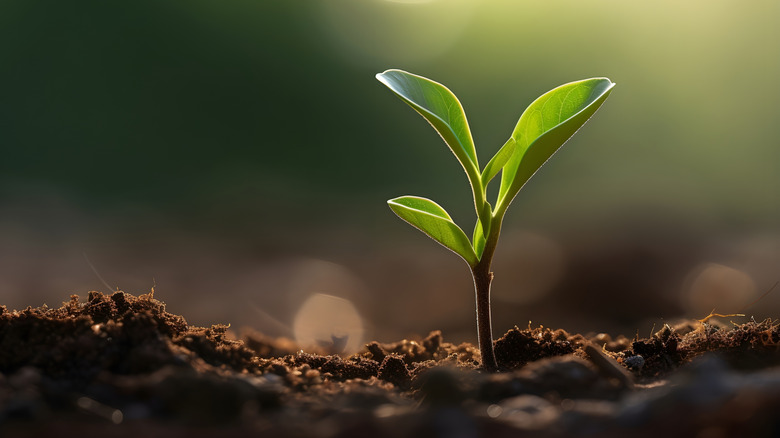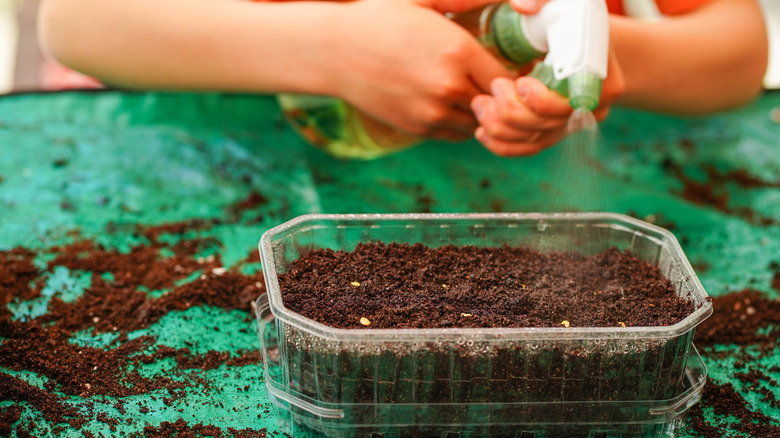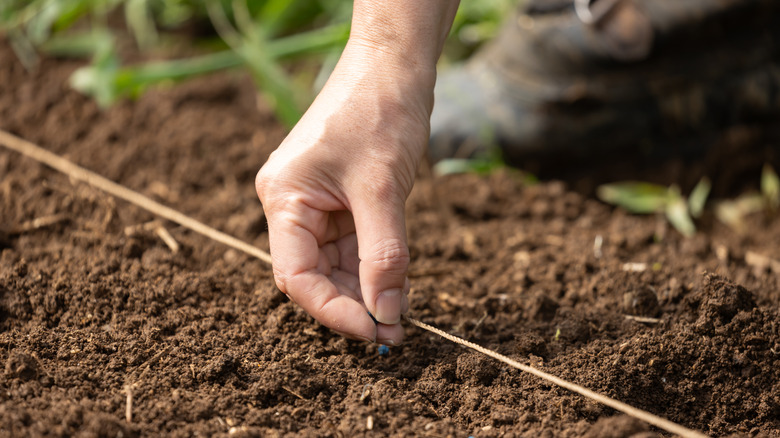Indoor Vs. Outdoor Seedlings: How Often Should You Be Watering Each?
One of the most rewarding things in the garden is watching the process of seeds becoming plants. Starting with seed allows you to explore a wider variety of flowers and vegetables than what's typically available at nurseries, and it gives you the satisfaction of nurturing a plant through every stage of its growth. But for seedlings to survive and thrive, they need consistent care, and that starts with proper watering.
Seedlings rely on moisture from the moment a seed begins to germinate. Water softens the seed coat, activates enzymes, and supports early root and shoot development. As those young roots begin to establish, they depend on regular watering to continue growing, but they are sensitive to moisture levels from the start. Overwatered soil can lead to root rot, while extended dryness may stop roots from developing at all.
How often you water seedlings depends on their environment. Indoor setups offer stable conditions, while outdoor seedlings face changing weather and soil moisture. In both cases, watering isn't something you can set on autopilot. It takes observation and small adjustments as the plants develop, but you'll probably want to ensure they get water every single day, especially at first.
Indoor seedlings rely on steady moisture
When starting seeds indoors, you have more control over the growing conditions, but that also means you're responsible for maintaining the right balance of moisture and humidity. During the germination stage, water triggers the entire process of growth. Seeds need a stable environment to sprout, and that starts with moisture control. A clear cover over your seed trays can lock in humidity and reduce the need for daily watering. Without one, lightly misting the surface once or twice a day can help keep conditions consistent without shifting the soil.
As soon as seedlings break the surface, their watering needs change. Shallow roots can dry out quickly, so it's worth checking the soil daily. Instead of watering from above, which can dislodge new growth, try bottom-watering. Set the tray in a shallow basin of water and let the soil absorb what it needs. This method encourages healthy root development by encouraging the roots to move down to the water. It also helps avoid rot since the roots will only take up the water that the plant needs, rather than sitting in water.
The final phase is hardening off, when you begin preparing your seedlings for life outdoors. During this stage, lower the water intake of your seeds. If you were watering daily, scale back to every other day. Letting the top of the soil dry out slightly helps the plants adjust to naturally changing conditions when they're moved outdoors.
Outdoor seedlings respond to shifting weather
When you sow seeds directly into the soil, their watering needs are different from those that start indoors or get transplanted later. Outdoor conditions like sun, wind, temperature, and soil type all affect how fast moisture evaporates, and how often you'll need to water. To get started with direct sowing your seeds, begin by clearing weeds and stones from the planting spot, then rake the surface until the soil feels loose and even. For even spacing, you can sow in shallow rows (called drills) made with a stick, or broadcast small seeds by mixing them with sand and scattering by hand. Always check the seed packet for spacing and depth.
Before sowing, lightly moisten the drills to stimulate germination. After covering the seeds with soil, water again very gently using a fine watering can or hose on a mist setting. This helps settle the soil without washing seeds out of place. Check the soil daily. If it feels dry about an inch down, it's time to water. The goal is to keep the top layer consistently moist but not soggy because overwatering can cause seeds to rot.
The type of soil you're working with also makes a difference. Sandy soil drains faster and usually requires more frequent watering, whereas clay holds onto water but can dry unevenly. In soggy spots, it's smarter to fix the drainage or grow plants that can handle extremes. In certain conditions for certain types of plants, excess moisture can suffocate roots.


